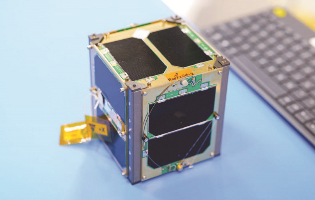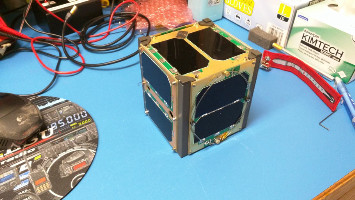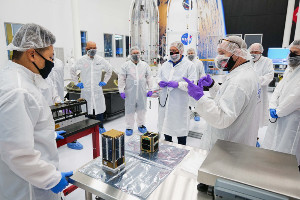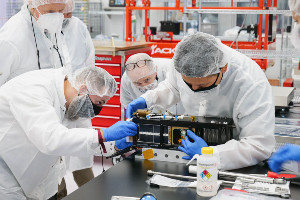| Satellite name | RadFXSat-2 (Fox-1E, AO-109) |
|---|---|
| Type | CubeSat |
| Units or mass | 3U |
| Mass in kg | 1.3 kg |
| Status | Reentry 2024-04-24. Was semi-operational (Beacon not heard strongly, but transponder is partially operational for public at reduced signal strength as of 2021-08-18. Working but weak signals as per SmallSat 2023 presentation) |
| Launched | 2021-01-17 |
| NORAD ID | 47311 |
| Deployer | FANTM-RAiL [Xtenti] |
| Launcher | LauncherOne |
| Organisation | Vanderbilt University |
| Institution | University |
| Entity | Academic / Education |
| Headquarters | US |
| Launch brokerer | NASA CSLI / ELaNa |
| Partners | The Radio Amateur Satellite Corporation (AMSAT), AMSAT |
| Oneliner |
Demonstrate a short interval, cost-effective, on-orbit platform for qualification of components for space. |
| Description |
Demonstrate a short interval, cost-effective, on-orbit platform for enhanced qualification of components for space flight. The data collected will be used to validate and improve computer models used to predict radiation tolerance of integrated circuits. Also serve as a communications relay for amateurs worldwide via the onboard transponder system. The communications and experiment missions will run concurrently. |
| Results | |
| Failure cause | It is hypothesized that a dual power amplifier chip onboard shorted which, coupled with an antenna that did not fully deploy, resulted in weak signal. |
| Sources | [1] [2] [3] [4] [5] [6] [7] [8] |
| Photo sources | [1] [2] [3] |
| On the same launch |
Last modified: 2024-05-26




